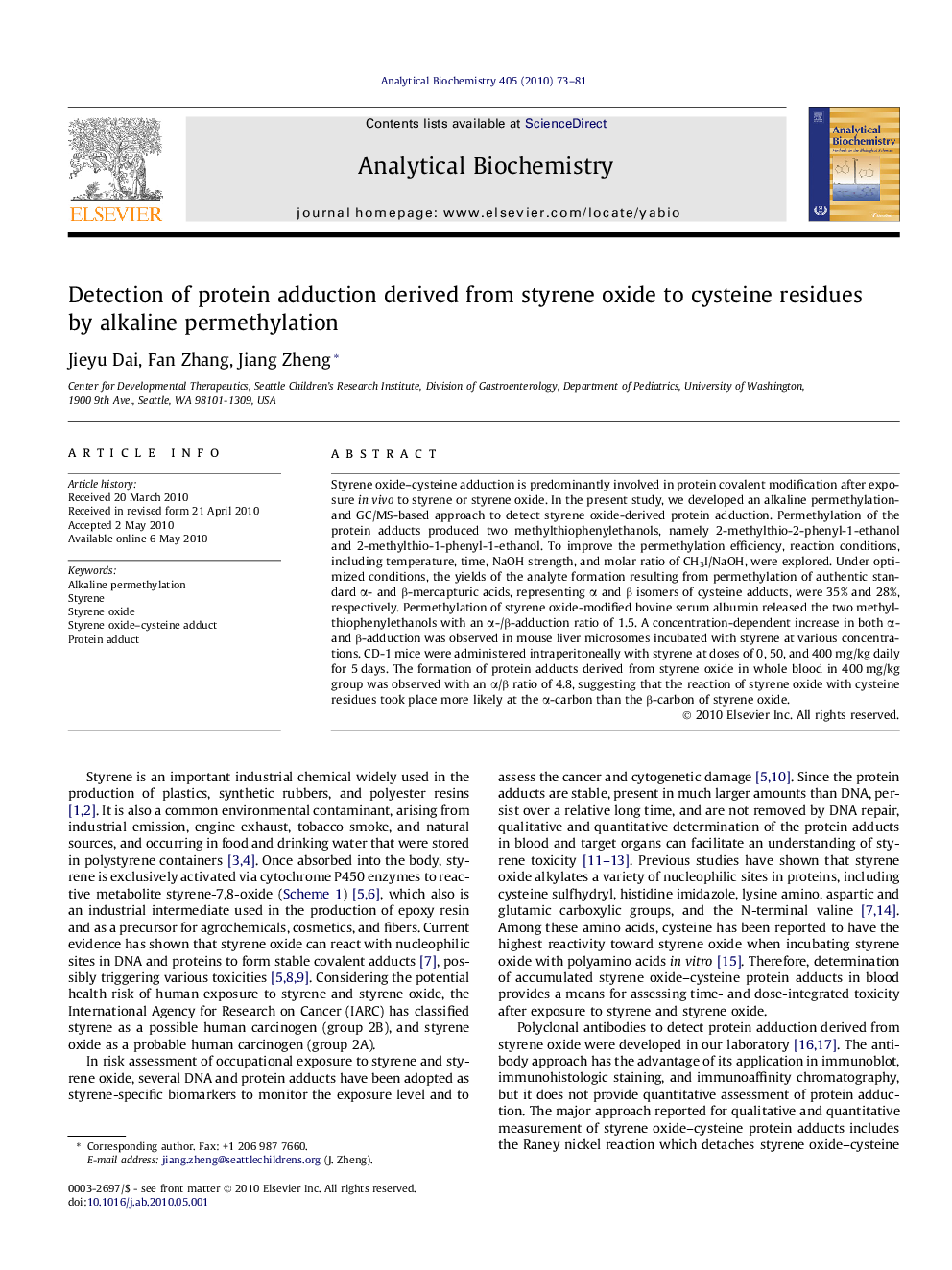| Article ID | Journal | Published Year | Pages | File Type |
|---|---|---|---|---|
| 1173908 | Analytical Biochemistry | 2010 | 9 Pages |
Styrene oxide–cysteine adduction is predominantly involved in protein covalent modification after exposure in vivo to styrene or styrene oxide. In the present study, we developed an alkaline permethylation- and GC/MS-based approach to detect styrene oxide-derived protein adduction. Permethylation of the protein adducts produced two methylthiophenylethanols, namely 2-methylthio-2-phenyl-1-ethanol and 2-methylthio-1-phenyl-1-ethanol. To improve the permethylation efficiency, reaction conditions, including temperature, time, NaOH strength, and molar ratio of CH3I/NaOH, were explored. Under optimized conditions, the yields of the analyte formation resulting from permethylation of authentic standard α- and β-mercapturic acids, representing α and β isomers of cysteine adducts, were 35% and 28%, respectively. Permethylation of styrene oxide-modified bovine serum albumin released the two methylthiophenylethanols with an α-/β-adduction ratio of 1.5. A concentration-dependent increase in both α- and β-adduction was observed in mouse liver microsomes incubated with styrene at various concentrations. CD-1 mice were administered intraperitoneally with styrene at doses of 0, 50, and 400 mg/kg daily for 5 days. The formation of protein adducts derived from styrene oxide in whole blood in 400 mg/kg group was observed with an α/β ratio of 4.8, suggesting that the reaction of styrene oxide with cysteine residues took place more likely at the α-carbon than the β-carbon of styrene oxide.
